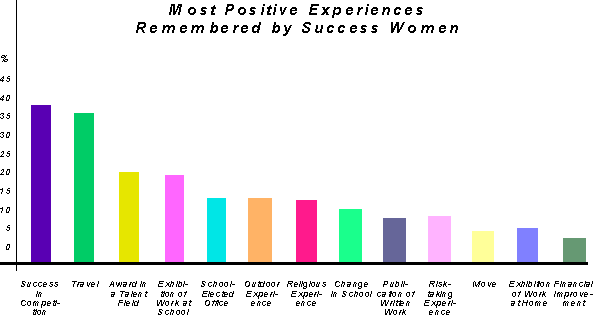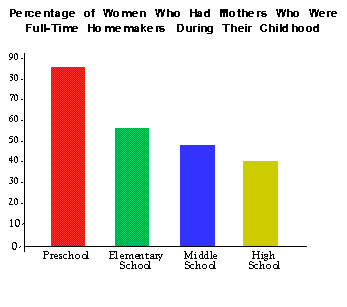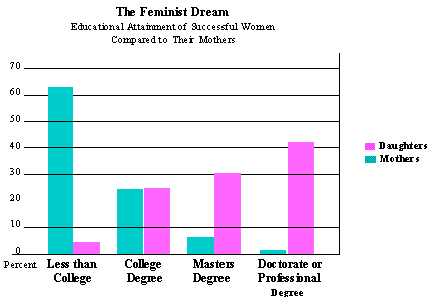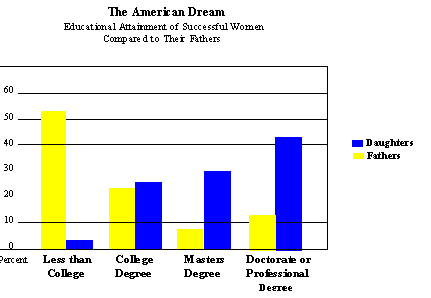
|
Interesting Findings from the Research
Also read How to Raise a Whole Smart
Family
 |
The successful women's most frequently mentioned, positive,
childhood experience was"winning in competition." The second most frequently
mentioned childhood experience was travel. |

 |
The women's most frequent descriptions of themselves as
children were "smart," "hard working," and "independent." |
 |
Forty percent considered themselves to be less social than
other girls. More than half liked to spend time alone, and a third considered themselves
shy as children. |

 |
More than half viewed their mothers as role models, compared
to only 25 percent who did so for their fathers. Many of the women were inspired by or
identified with their teachers. |

|
Although over 80 percent of these women's mothers were
homemakers during their preschool years, by their daughters' high school years, only
one-third remained homemakers. |

|
 |
Forty percent of the physicians' mothers returned to school
while their daughters were growing up. |
 |
Less than a third of these women's mothers and less than
half of their fathers had college educations. Thirteen percent of their parents were
immigrants. |


 |
 The women were very involved in extracurricular activities. Physicians,
nurses, and teachers tended to be particularly active in sports; women in government were
more likely to have been active in student government; media women did more writing or
were often in drama; and attorneys were more frequently in debate. The women were very involved in extracurricular activities. Physicians,
nurses, and teachers tended to be particularly active in sports; women in government were
more likely to have been active in student government; media women did more writing or
were often in drama; and attorneys were more frequently in debate. |

|
 |
More than half of the women belonged to the Girl Scouts or
some other all-girl organization. They often commented that their leaders were good role
models for independence. |
 |
 The women's most frequently mentioned girlhood activity was reading,
followed by piano and other music. The women's most frequently mentioned girlhood activity was reading,
followed by piano and other music. |

|
 |
Twenty-five percent skipped subjects and fifteen skipped at
least one grade. Physicians, musicians, and artists had the most grade skippers. |
 |
Ten percent attended all-girl high schools and thirteen
percent attended women's colleges. Physicians and nurses had the largest percentages that
attended all-girl high schools. More teachers, nurses, attorneys, business executives, and
politicians attended women's colleges, which they credited for leadership opportunities. |
 |
 Nurses, doctors and scientists were
strong science students, but math skills separated scientists and doctors from nurses by
middle and high school. Nurses, doctors and scientists were
strong science students, but math skills separated scientists and doctors from nurses by
middle and high school. |
 |
There were more firstborns in almost all career groups, more
middle children among homemakers, and more youngest children among mental health
professionals. |
 |
Full-time homemakers, educators, nurses, and mental health
professionals more frequently rated their family lives as excellent. |
 |
The successful women were resilient. Sixty percent talked
about "hitting walls" when they became anxious, depressed, or lost confidence in
themselves. The most frequently mentioned adaptive skill was "perseverance." |
Check
out Dr. Rimm's other web site at www.sylviarimm.com
Home |